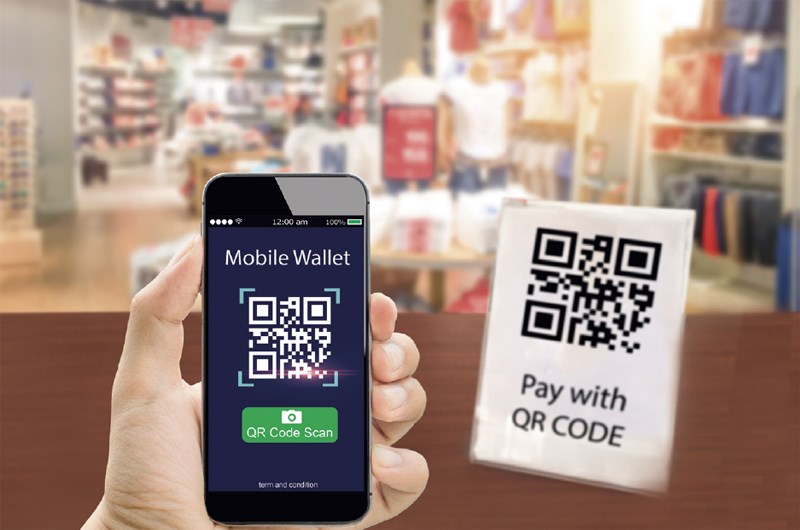QR code-based mobile payments show great promise in Taiwan
QR code-based mobile payments show great promise in Taiwan

Taiwan has offered near-field communication (NFC) mobile payments, which use sensors to complete payments, for several years. Now, the government and vendors are introducing mobile payments based on QR codes to the market.Mobile payments powered by sensors (near-field communications or NFC) started to become common in Taiwan about five years ago. The three major mobile payment platforms were Alliance Digital Technology Co., Smart Catch International Co and Taiwan Mobile Payment. Apple Pay entered the Taiwan market a year ago, but it has a limited retail network. Currently, 26 Taiwanese banks are promoting the Taiwan Pay QR code system which is a rival to existing mobile payment platforms. Increasing willingness to use QR Code mobile paymentsMobile payments have made limited inroads in Taiwan thus far partially due to the cost of the NFC-enabled contactless payment terminals. Only a limited number of retail shops (the largest and most profitable ones) are willing to buy the machines. As a result, Taiwan has less than 200,000 NFC-enabled payment terminals. We mainly see these terminals in large department stores or large retail chains. Even the entry of big global mobile payment vendors like Apple Pay and Samsung Pay have not boosted mobile payment adoption. Taiwan Pay's QR code-powered platform is expected to boost mobile payments here because of the system's ease of use for small retailers. Night-market vendors, small retail stores and even individual e-commerce sellers are typically willing to accept payment by QR code. They don't need to buy additional hardware like a POS machine. They only need to provide a QR code which can be scanned to complete a transaction. Taiwan Pay will be rolled out in three stages. In the first stage, consumers will be invited to open mobile banking accounts or accounts linked to a debit card they scan. In the second stage, retailers will be asked to set up a system to receive payment from customers scanning their debit cards. In the third stage, most likely at the end of the year, Taiwan Pay will be linked with the six largest global credit card companies so that users will be able to scan their credit cards too. Credit-card companies have had limited success with POS mobile payment terminals. As a result, they have begun to show more interest in QR code payments. Visa and MasterCard have recently launched QR code mobile payment systems. This is especially applicable in developing countries, where low household income, insufficient infrastructure and underdeveloped credit rating systems are prevalent, making it difficult for traditional credit cards to penetrate the market. Focus on fund transfer and payment functions If a bankcard completes a mobile payment using the QR Code, it may even be directly connected to the bank's mobile internet banking system. There is no need to apply for a separate HCE financial card. For example, among state-owned banks, Huanan is the first to establish a QR Code common payment platform. At present, Hunan has 6,000,000 mobile internet banking users in Taiwan who can use Taiwan Pay. The system is beneficial for consumers and can help banks grow their businesses. Experts say that mobile payments have wide applications. To date, the focus has been on consumers' use of mobile payments to make purchases, but they can also be used for fund transfers and pay bills. With the launch of Taiwan Pay, mobile payments can tap opportunities in both of these segments. If mobile payments users choose to transfer funds and pay their bills with a QR code, it can help boost the amount of money in checking accounts and lower the cost of capital. The smartphone as a 3-in-1-device, handling communications, credit card functions and acting as a transport passIn the future, smartphones can act as 3-in-1-devices, which handle communications, credit card functions and act as a transport pass. It will be very convenient for users of public transport if instead of having to take a card out of their wallet, they can simply swipe their smartphones when they want to use the MRT. There won't be any need to refill the cards, or worry about keeping them on your person. Several companies have started to offer 3-in-1-device services. Last October, Taiwan Mobile and Fubon Bank launched this service together; they are the first to do so. Meanwhile, EasyCard (Taiwan's main transportation card company) is cooperating with Taiwan Pay SDK (software development kit). SDK will aim to integrate banking, communication and ticket functions. Taiwan Pay SDK is expected to allow businesses to offer diversified mobile payment services without building HEC and TSP platforms. Further, businesses will not need to bear the R&D costs of developing mobile payment infrastructure. Instead they can focus on brand building. Some of Taiwan's state-owned banks have launched their own digital wallets or apps using the Taiwan Pay SDK platform. So has Taiwan Mobile and EasyCard; theirs is the first card which combines both credit card and transportation pass functions. Meanwhile, Taiwan's telecom companies are also interested in opportunities in the mobile payments market. Chunghwa Telecom is working with iPass, first in southern Taiwan and now they are expanding to northern Taiwan. This shows how mobile payments in Taiwan include alliances of both a vertical and horizontal nature. Looking ahead, QR code mobile payments show great promise in Taiwan. Banks will need to move quickly if they intend to capture market opportunities.



